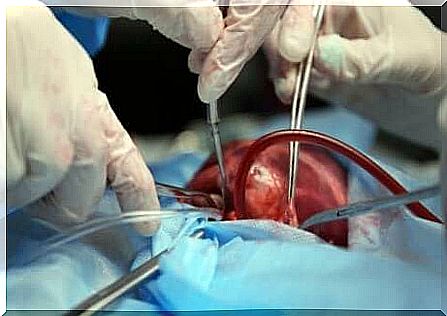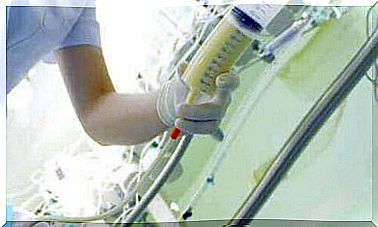Sternotomy: Complications And Recovery

Currently, most heart surgeries are performed through a median sternotomy. This type of incision was first performed in 1857 and became popular in 1957.
In general, complications after a sternotomy are rare. When they do occur, however, they are usually very serious. The most common complications of this incision are infections and mediastinitis. The latter is an inflammation of the space between the lungs.
The most comprehensive study of sternotomy complications was conducted in parallel at several sites, namely:
- the Karolinska Institute in Sweden.
- the University of Toronto in Canada.
- Washington University in St. Louis, Missouri, United States.
The researchers managed to identify most of the risk factors, which we will talk about in this article. So read on quickly!
What is a sternotomy?

A sternotomy is a surgical incision that surgeons make along the sternum to access the chest cavity. They have been using it for cardiothoracic surgery since the 1950s. Until then, a bilateral anterolateral thoracotomy was performed, the usual procedure at the time.
In general, sternotomy became popular because it is less painful than the techniques used before. However, it soon became apparent that they could lead to complications such as infections or wound dehiscence. This is the spontaneous opening of a wound after it has been closed.
Thus, a sternotomy is a surgical procedure in which a surgeon makes a vertical inline incision along the sternum. This gives access to the entire chest area, including the heart and lungs. It offers several advantages such as:
- less postoperative pain
- better access to the pleural cavities
- better protection of the shoulder muscles
Complications with a sternotomy
In general, a sternotomy is a fairly safe procedure. However, sometimes this procedure leads to complications. One of the most common complications is infections, although they affect only about 3% of patients.
In this case, the infection can be superficial or severe. In either case, however, the consequences can be serious. They usually result in hospitalization and can be life-threatening. Between 4% and 47% of patients worldwide who contract a sternotomy-related infection eventually die.
Most often, the infection comes from sternal osteomyelitis or mediastinitis. On average, these complications manifest themselves between 7 to 12 days after surgery. However, most patients develop these complications in the first week after surgery.
Mediastinitis, which is the acute or chronic inflammation of the mediastinum (the tissues in the breast), is the most serious complication. Mediastinitis is caused by an infection and is very serious and sometimes fatal. It generally requires surgical intervention.
Risk Factors

The infections associated with sternotomy are related to certain factors that can be divided into three groups. The first group includes the elements inherent to the patient and thus already present before the operation.
The second group consists of factors arising from the surgical procedure. Finally, the third and final group consists of postoperative factors. Let’s take a closer look at them:
Preoperative Factors. In this case, the risk factors include being male, being older, being obese, and smoking. This also includes suffering from diabetes, chronic obstructive pulmonary disease or kidney failure.
Surgery-related factors. These include the need for intervention, duration of intervention, type of intervention, excessive electrocautery, and cardiogenic shock.
Postoperative factors. These include prolonged mechanical ventilation, bleeding and the use of inotropes.
Recovery after a sternotomy
When the risk factors are properly identified beforehand, recovery is usually successful. This can reduce the risk of complications and make them easier to treat if they do occur. Risk factors that deserve special attention include:
- obesity
- diabetes
- old age
Usually, the treatment of infections involves various techniques and treatments. This includes drainage, irrigation, wound therapy with negative pressure, surgical intervention, covering the area and also the use of a broad spectrum antibiotic.
Care after a sternotomy includes cleaning the wound with mild soap and then drying it carefully. The stitches will dissolve on their own after a few weeks. Wound closure strips, self-adhesive strips that facilitate healing, fall off on their own or are removed by the patient after a week.
It is normal for the patient to experience intermittent and episodic chest pain. If this pain is severe, the patient should take painkillers. It is also normal for the incision to swell a little. After a few months, the chest should have recovered.









